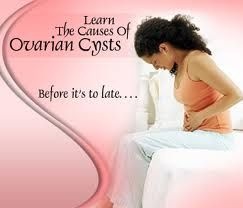
Commonly, ovarian cyst can take place in women belonging to any age group but more often, it occurs during childbearing years of a woman. Symptoms of ruptured ovarian cysts are quite similar to the indications in initial stage. In both the cases, most frequent symptom is intense pain. In few cases, women with ovarian cyst undergo a severe pelvic pain that is continuous, dull and hurting. Women also experience extreme pain in the conduct of regular activities like in the course or immediately after sexual intercourse. Pain can be felt while performing regular work like lifting, exercise and physical activity
Ovarian cysts are collection of liquid enclosed by a thin wall inside an ovary. Ovarian Follicle, which is greater than an object of two centimeter, is actually known as Ovarian Cyst. The ovarian cysts can be as small as a pea or can be larger than orange. Mostly, Ovarian Cysts are operational but not detrimental. In most of the patients, ovarian cyst develops without revealing any symptoms and retreat without medical treatment. However, some severe and potential complications are associated with the disease that involves cystic rupture, pressure on organs and torsion. Ruptured ovarian cysts can result in intense pain followed by an intricate medical complication.
If cysts do not resolve naturally, doctors can remove it using surgical methods. Complex ovarian cysts can lead to life threatening and dreadful complications like hemorrhage or infection. Patients must consult doctor as soon as they recognize symptoms of ovarian cyst with a purpose to avoid serious medical complexity. In present evolving scenario, it is very important to educate women about asymptomatic, wicked and perilous ovarian cyst. Many professional sites of clinical research provide information about useful measures to detect that you have ovarian cyst or not. In reality, a mass filled with fluid develops in women’s ovary eggs do not discharge at ovulation. On stabilizing, the doctors then prescribe antibiotics to fight infections of any kind by the fluids released during ovary rupturing. The doctor also opts for scanning and internal body examinations to know about the condition in detail. This also confirms the presence of more ovary cysts.



